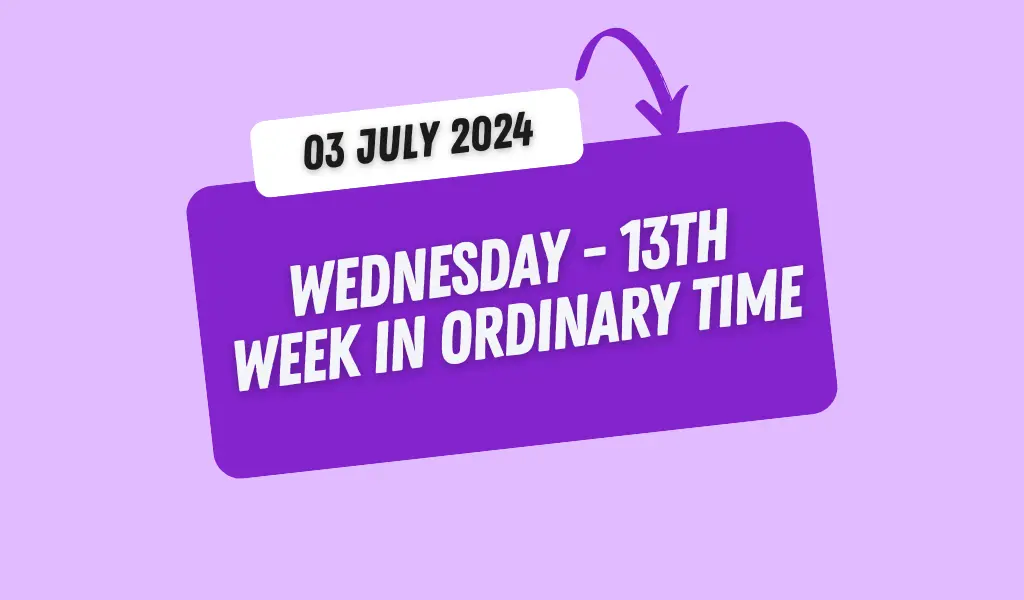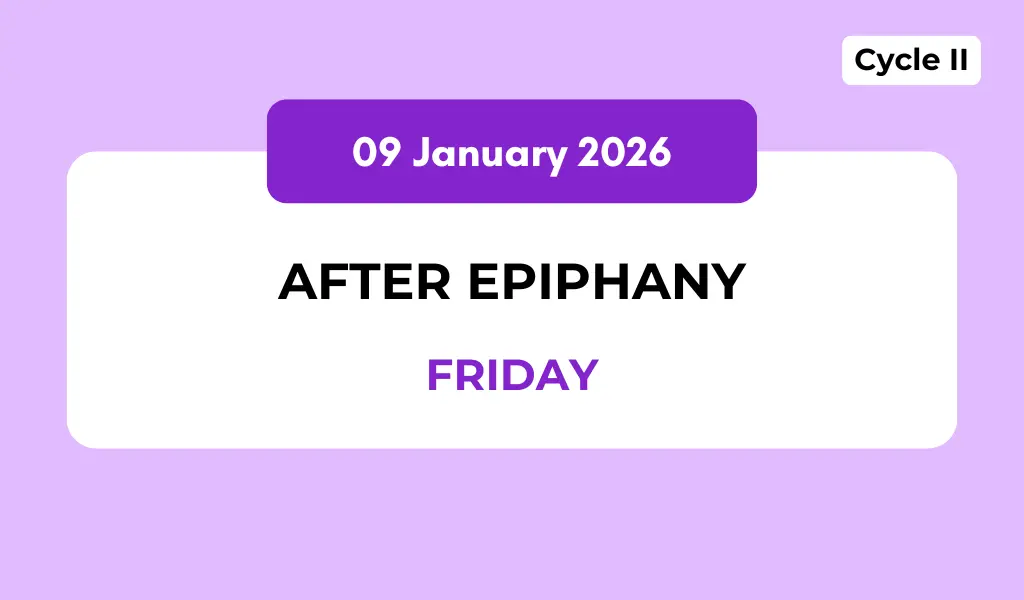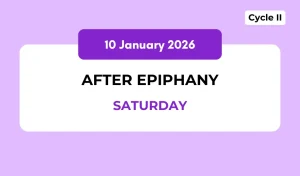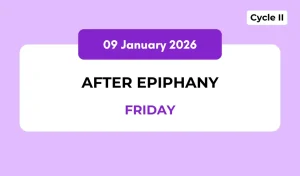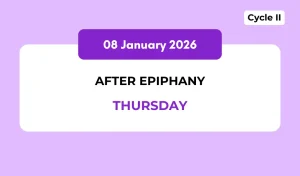Thirteenth Week of Ordinary Time
03rd July 2024 (Wednesday)
Psalter: Proper
Saint Thomas, Apostle
Reading of the Day
First Reading: Ephesians 2:19-22
Brethren: You are no longer strangers and aliens, but you are fellow citizens with the saints and members of the household of God, built on the foundation of the apostles and prophets, Christ Jesus himself being the cornerstone, in whom the whole structure, being joined together, grows into a holy temple in the Lord. In him you also are being built together into a dwelling place for God by the Spirit.
Psalm 116:12-13, 15 and 16bc, 17-18 (R. 9)
R/. I will walk in the presence of the Lord in the land of the living.
Gospel Acclamation
V/. Alleluia
R/. Alleluia
V/. Have you believed, Thomas because you have seen me? says the Lord; blessed are those who have not seen and yet have believed.
R/. Alleluia.
Gospel : John 20:24-29
Now Thomas, one of the twelve, called the Twin, was not with them when Jesus came. So the other disciples told him, “We have seen the Lord.” But he said to them, “Unless I see in his hands the mark of the nails, and place my finger into the mark of the nails, and place my hand into his side, I will never believe.” Eight days later, his disciples were inside again, and Thomas was with them. Although the doors were locked, Jesus came and stood among them and said, “Peace be with you.” Then he said to Thomas, “Put your finger here, and see my hands; and put out your hand, and place it in my side. Do not disbelieve, but believe.” Thomas answered him, “My Lord and my God!” Jesus said to him, “Have you believed because you have seen me? Blessed are those who have not seen and yet have believed.”
Daily Gospel Reflection
Wednesday – Thirteenth Week of Ordinary Time
Guidelines: A sense of being excluded may be a natural experience and a believer is not exempt from it. It can cause pain and anguish but can lead to purify and solidify one’s faith
1. Today we venerate St Thomas, one of the Twelve Apostles, the Apostle of India. He is popularly known as “doubting Thomas”. Though it is usually mentioned in a lighter vein, yet such a label on him may not be so fair and deserving.
2. First of all, given all his faith and loving intimacy with the Lord, it cannot be really a doubt, though apparently it is. Because, what actually can he doubt? Does he doubt that Jesus is risen and appeared to the apostles? Does he doubt the power of Jesus? Does he doubt his companions’ truthfulness? Why should they tell him lies? Surely, they will not play the fool with him in such a serious matter.
3. Therefore, there isn’t real scope for doubt. Instead, it is a kind of protest out of displeasure. A child may protest when his parents tell him that they went shopping when he was at school. He protests that he will not believe unless he sees something they shopped. Or, a child may protest when his parents tell him that his dearest uncle or aunt came home when he was away. He protests that he will not believe unless he sees some evidence for their visit.
4. It is no doubt but an expression of dissatisfaction, a saddening feeling of missing something very important. Similar must be the disappointment and frustration of Thomas. He comes home, still under the painful spell of the death and separation of his beloved Master.
5. And behold, his companions excitedly report that the risen Lord appeared to them. His sadness turns into annoyance. In all simple human thinking, he must have thought and felt, “This is not fair! The Lord knows me well. He knows how much I love him and feel the loss of him. How could he miss me out? How would he exclude me from this joy of meeting him? Does he not care for me? Do I not count for him?
6. Therefore, behind the surface level doubt, there is deep down a profound belonging and longing for the Lord and an anguish at separation from him. That is why, when the Lord appears again, his response was a wholehearted attestation of total belonging and surrender, “My Lord and my God!”
7. It is an expression of inseparable intimacy and unreserved surrender. This encounter of Jesus with Thomas also becomes an occasion of one of the greatest key tenets of faith. Jesus declares, “Blessed are those who do not see me and yet believe”.
8. Thereby, it is clear that the inner experiences of seeing and experiencing Jesus are more important than the direct visible experiences. The inner eye of faith enables us to believe that God’s grace never excludes us. He would never deprive us of His grace, as we see Cornelius in the first reading from Acts. God’s grace embraces Cornelius, a gentile as he too believes along with his family.
Practice: In life, we may not always see God’s presence and His hands working in favour of us. It is in such moments, we need to open wide our inner eye of faith to see that He is always there to touch us, grace us and transform us. He never ceases to assure us, “Peace be with you!”
